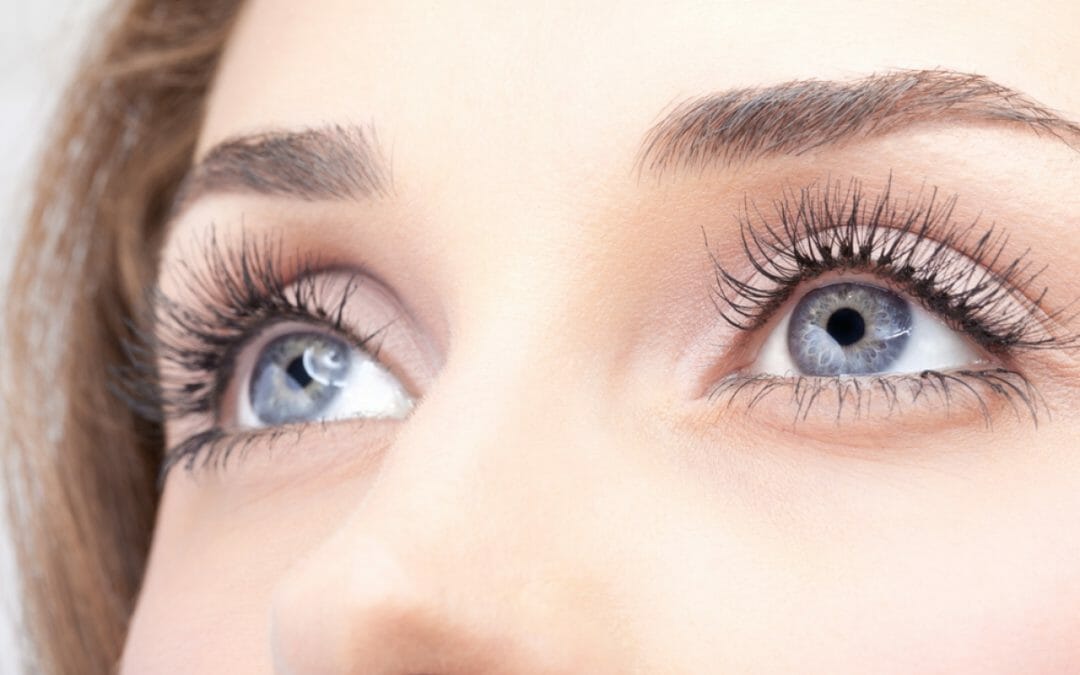New Treatment for Blepharitis -Oral Azithromycin
Oral azithromycin is an antibiotic that treats a variety of medical conditions, from infections to inflammation. Azithromycin is a very effective treatment for blepharitis. Azithromycin and be formulated as an oral pill or in liquid form as eye drops. Azithromycin is a macrolide antibiotic.
What is blepharitis
Blepharitis is the inflammation of the eyelids caused by either bacteria or mites (Demodex). For more information, click here.
Causes
The root cause of blepharitis is chronic dry eyes. Blepharitis affects half of the people that visit their eye doctors due to dry eye conditions. Allergy sufferers frequently find that they suffer from blepharitis due to the prevalence of dry eye syndrome and ocular allergy.
What are the symptoms ?
Symptoms include:
- Ocular and eyelid redness
- Eye irritation
- Itching on and around the eyelids
- Burning sensation
- Worsening of symptoms in the evening
- Crusting of the eyes in the morning.
What happens if left untreated?
Blepharitis left untreated can develop into more severe conditions such as meibomian gland dysfunction (clogging of oil glands along eyelashes called MGD), loss of eyelashes, chalazia, and Styes.
Anterior Versus Posterior Blepharitis
Anterior blepharitis is an infectious condition caused by Staphylococcus bacteria affecting the eyelids, causing crusty lashes, red and irritated eyes, and swelling of the eyelids.
In posterior blepharitis, or meibomian gland disease, many symptoms are the same for anterior blepharitis, but additional symptoms also appear.
Why MGD due to blepharitis matters
Inflammation of the tear oil glands ( MGD, Meibomian gland dysfunction) that restricts lubricant production, thickened eyelid margins, and dry eyes. Many cases present with both anterior and posterior blepharitis.
Traditional Treatments
Once the eye doctors make the diagnosis -they prescribe traditional options such as:
- Lid hygiene
- Warm compresses – a hot washcloth is not good enough
- Topical ointments applied at night
- Oral tetracyclines or azithromycin
Although lid hygiene and warm compresses are effective treatments, they will not eliminate infectious material on the eyelid. Topical ointments are often messy and can be bothersome for people with a blurry vision from the ointment.
Doxycycline is effective
Doxycycline antibiotics are known to be effective for blepharitis. Doxycycline is strongly anti-inflammatory at 50mg/day. At higher doses, it is an antibiotic.
New Effective Treatment with Azithromycin
New researches have concluded that azithromycin eye drops are effective in treating blepharitis. Azithromycin is the crucial ingredient in Azasite – a prescription eye drop frequently used for Blepharitis treatment.
Recommended treatment protocol
Therefore, more effective treatment for blepharitis would include:
- Azithromycin ophthalmic solution 1%
- Cleaning eyelids and lashes after hot compress– we highly recommend Avenova eyelid cleanser – hypochlorous-based.
- Application of warm compresses twice a day, – 10 minutes each time. Gently massage eyelids afterward.
- Omega-3 fatty acids- 4000mg/day
TheraLife Eye capsules to restore and revive tear secretion glands and relieve dry eyes all day long.
Azithromycin Clinical Trial Results
The positive results of azithromycin ophthalmic solution 1% work well. Usually, blepharitis takes weeks or months to resolve. Some of the drugs like steroids used to treat blepharitis have bad issues with long-term use. However, azithromycin’s ability to relieve blepharitis quickly eliminates this concern.
Anti-inflammatory properties of azithromycin
Azithromycin also has strong anti-inflammatory properties. Since inflammation is at the center of blepharitis – azithromycin is the preferred treatment of choice for blepharitis.
Design of clinical study for azithromycin
In one clinical study, 150 patients with blepharitis were treated with lid hygiene or either erythromycin ointment or azithromycin. After one month, 98.5% of patients who used azithromycin were completely recovered compared to 37.5% of patients in the other group.
TheraLife Blepharitis Treatment Starter Kit
People with blepharitis and dry eyes have successfully been treated with TheraLife products plus azithromycin. TheraLife provides complete recovery for people with dry eyes, blepharitis, and MGD.
The complete solution for recurring blepharitis is the TheraLife All-In-One Starter Kit. This kit provides users with everything needed to find relief from blepharitis. This discounted starter kit includes:
- Four bottles of TheraLife Eye to revive intra-cellular tissue and restore balanced, sustainable tears
- One bottle of Pure Omega 3 Fish Oil to fight inflammation and thicken tears.
- One bottle of eyelid cleanser to clean the eyes and stop reattachment of bacteria and mites that are the leading cause of inflammation
- One gel hot compress to open clogged meibomian oil glands
- 90-day money-back guarantee
TheraLife Eye Capsules
TheraLife eye capsules contain clinically proven ingredients that allow the eyes to produce natural tears and stop the painful dry eye cycle.
A healthier long-term solution to the treatment of dry eyes, these capsules help stop the use of eye drops that can dry eyes out.
Omega 3 Fish Oil
Fish oil is a well-known anti-inflammatory for people with dry eyes, blepharitis, and MGD. It also helps to thicken tears for added protection of the ocular surface.
Avenova Eyelid Cleanser
Avenova eyelid cleanser is a natural product that contains hypochlorous acid. Avenova is a gentle and effective cleanser that disrupts the biofilm layer and prevents bacteria and mites from reattaching. Avenova includes ingredients that the body already produces.
Hot Compress
The hot compress eliminates the need to reheat a washcloth and stays warm for up to 20 minutes. Meibomian glands need this extended time to unclog and allow the thick lubricates to flow.
Your road to recovery
Call and talk to a doctor toll-free 1-877-917-1989 US/Canada; International (650) 949-6080 Email inquiries to: [email protected]
References
- Bowling JJ. Clinical Ophthalmology: A Systemic Approach.7th ed. New York: Elsevier Saunders; 2011. pp. 34–39.
- Lemp MA, Nichols KK. Blepharitis in the United States 2009: a survey-based perspective on prevalence and treatment. Ocular Surface. 2009;7(Suppl 2):1–14.
- Nelson JD, Shimazaki J, Benitez-del Castillo JM, et al. The international workshop on meibomian gland dysfunction: report of the definition and classification subcommittee. Invest Ophthal Vis Sci. 2001;52(4):1930–1937.
- Nemet AY, Vinker S, Kaiserman I. Associated morbidity of blepharitis. Ophthalmology. 2011;118(6):1060–1068.
- McCulley JP, Dougherty JM. Blepharitis associated with acne rosacea and seborrheic dermatitis. Int Ophthalmol Clin. 1985;25(1):159–172.
- Groden LR, Murphy B, Rodnite J, Genvert GI. Lid flora in blepharitis. Cornea. 1991;10(1):50–53.
- Huber-Spitzy V, Baumgartner I, Bohler-Sommeregger K, Grabner G. Blepharitis – a diagnostic and therapeutic challenge: report on 407 consecutive cases. Graefes Arch Clin Exp Ophthalmol. 1991;229(3):244–247.
- Bernardes TF, Bonfioli AA. Blepharitis. Semin Ophthalmol. 2010;25(3):79–83.
- McCulley JP, Dougherty JM, Deneau DG. Classification of chronic blepharitis. Ophthalmology. 1982;89:1173–1180.
- American Academy of Ophthalmology Preferred Practice Pattern: Blepharitis.Oct, 2012. [Accessed November 10, 2014]. revision. Available from
- Din N, Patel NN. Blepharitis – a review of diagnosis and management. Int J Ophthalmol Prac. 2012;3(4):150–155.
- Duncan K, Jeng BH. Medical management of blepharitis. Cur Opin Ophthalmol. 2015;26(4):289–294.
- Scheinfeld N, Berk T. A review of the diagnosis and treatment of rosacea. Postgrad Med. 2010;122(1):139–143.
- Probst LE. Bacterial eyelid infections. In: Krachmer JH, Mannis MJ, Holland EJ, editors. Cornea.Philadelphia, PA: Elsevier Mosby; 2005. pp. 495–500.
- McCulley JP. Blepharoconjunctivitis. Int Ophthalmol Clin. 1984;24(2):65–77.
- Ficker L, Ramakrishnan M, Seal D, Wright P. Role of cell-mediated immunity to staphylococci in blepharitis. Am J Ophthalmol. 1991;111(4):473–479.
- Jackson WB. Blepharitis: current strategies for diagnosis and management. Can J Ophthalmol. 2008;43(2):170–179.
- Raskin EM, Speaker MG, Laibson PR. Blepharitis. Infect Dis Clin North Am. 1992;6(4):777–787.
- Nelson JD, Shimazaki J, Benitez-del Castillo JM, et al. The international workshop on meibomian gland dysfunction: report of the definition and classification subcommittee. Invest Ophthalmol Vis Sci. 2011;52(4):1930–1937.
- Driver PJ, Lemp MA. Meibomian gland dysfunction. Sur Ophthalmol. 1996;40(5):343–367.
- Mathers WD. Ocular evaporation in meibomian gland dysfunction and dry eye. Ophthalmology. 1993;100(3):347–351.
- Obata H. Anatomy and histopathology of human meibomian gland. Cornea. 2002;21:S70–S74.
- Shimazaki J, Sakata M, Tsubota K. Ocular surface changes and discomfort in patients with meibomian gland dysfunction. Arch Ophthalmol. 1995;113(10):1266–1270
- Dougherty JM, McCulley JP, Silvany RE, Meyer DR. The role of tetracycline in chronic blepharitis. Inhibition of lipase production in staphylococci. Invest Ophthalmol Vis Sci. 1991;32(11):2970–2975.
- Shine WE, McCulley JP. The role of cholesterol in chronic blepharitis. Invest Ophthalmol Vis Sci. 1991;32(8):2272–2280.
- Gao YY, Di Pascuale MA, Li W, et al. High prevalence of Demodex in eyelashes with cylindrical dandruff. Invest Ophthal Vis Sci. 2005;46:3089–3094.
- Liu J, Sheha H, Tseng SC. Pathogenic role of Demodex mites in blepharitis. Cur Opin Allergy Clin Immunol. 2010;10(5):505–510.
- American Academy of Ophthalmology Preferred Practice Pattern: Blepharitis.Sep, 2013. [Accessed December 14, 2015]. revision. Available from:
- Marquardt R, Stodtmeiser R, Christ T. Modification of tear film breakup time test for increased reliability. In: Holly FJ, editor. The Preocular Tear Film in Health, Disease and Contact Lens Wear.Lubbock: Dry Eye Institute; 1986. pp. 57–63.
- Tomlinson A, Khanal S. Assessment of tear film dynamics: quantification approach. Ocul Surf. 2005;3(2):81–95.
- Geerling G, Tauber J, Baudouin C, et al. The international workshop on meibomian gland dysfunction: report of the subcommittee on management and treatment of meibomian gland dysfunction. Invest Ophthalmol Vis Sci. 2011;52(4):2050–2064.
- Lindsley K, Matsumura S, Hatef E, Akpek EK. Interventions for chronic blepharitis. Cochrane Database Syst Rev. 2012;5:CD005556.
- Dougherty JM, McCulley JP. Comparative bacteriology of chronic blepharitis. Br J Ophthalmol. 1984;68(8):524–528.
- O’Brien TP. The role of bacteria in blepharitis. Ocul Surf. 2009;7(2):S21–S22.
- Opitz DL, Tyler KF. Efficacy of azithromycin 1% ophthalmic solution for treatment of ocular surface disease from posterior blepharitis. Clin Exp Optom. 2011;94(2):200–206.
- Luchs J. Efficacy of topical azithromycin ophthalmic solution 1% in the treatment of posterior blepharitis. Adv Ther. 2008;25(9):858–870.
- Luchs J. Azithromycin in DuraSite® for the treatment of blepharitis. Clin Ophthalmol. 2010;4:681.
- Igami TZ, Holzchuh R, Osaki TH, Santo RM, Kara-Jose N, Hida RY. Oral azithromycin for treatment of posterior blepharitis. Cornea. 2011;30(10):1145–1149.
- Greene JB, Jeng BH, Fintelmann RE, Margolis TP. Oral azithromycin for the treatment of meibomitis. JAMA Ophthalmol. 2014;132(1):121–122.
- Yoo SE, Lee DC, Chang MH. The effect of low-dose doxycycline therapy in chronic meibomian gland dysfunction. Korean J Ophthalmol. 2005;19:258–263.
- Iovieno A, Lambiase A, Micera A, Stampachiacchiere B, Sgrulletta R, Bonini S. In vivo characterization of doxycycline effects on tear metalloproteinases in patients with chronic blepharitis. Eur J Ophthalmol. 2009;19:708–716.
- Rubin M, Rao SN. Efficacy of topical cyclosporine 0.05% in the treatment of posterior blepharitis. J Ocul Pharmacol Ther. 2006;22:47–53.
- Perry HD, Doshi-Carnevale S, Donnenfeld ED, Solomon R, Biser SA, Bloom AH. Efficacy of commercially available topical cyclosporine A 0.05% in the treatment of meibomian gland dysfunction. Cornea. 2006;25:171–175.
- Lane SS, DuBiner HB, Epstein RJ, et al. A new system, the Lipi-Flow, for the treatment of meibomian gland dysfunction. Cornea. 2012;31(4):396–404
- Thode AR, Latkany RA. Current and emerging therapeutic strategies for the treatment of meibomian gland dysfunction (MGD) Drugs. 2015;75(11):1177–1185
- Toyos R, McGill W, Briscoe D. Intense pulsed light treatment for dry eye disease due to meibomian gland dysfunction; a 3-year retrospective study. Photomed Laser Surg. 2015;33(1):41–46.






I got rid of my recurring blepharitis by using the TheraLife Blepharitis starter kit. Very thankful that I found TheraLIfe